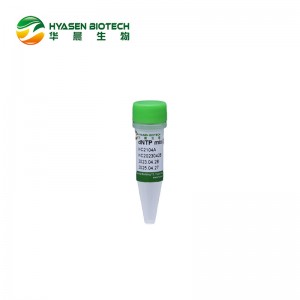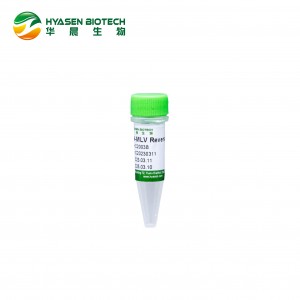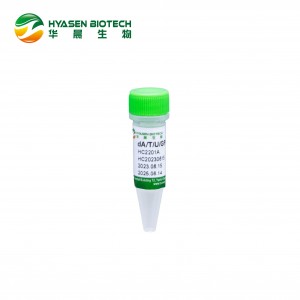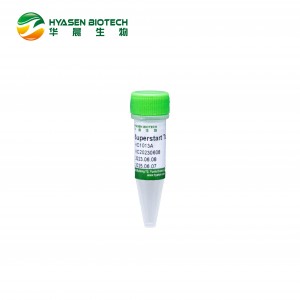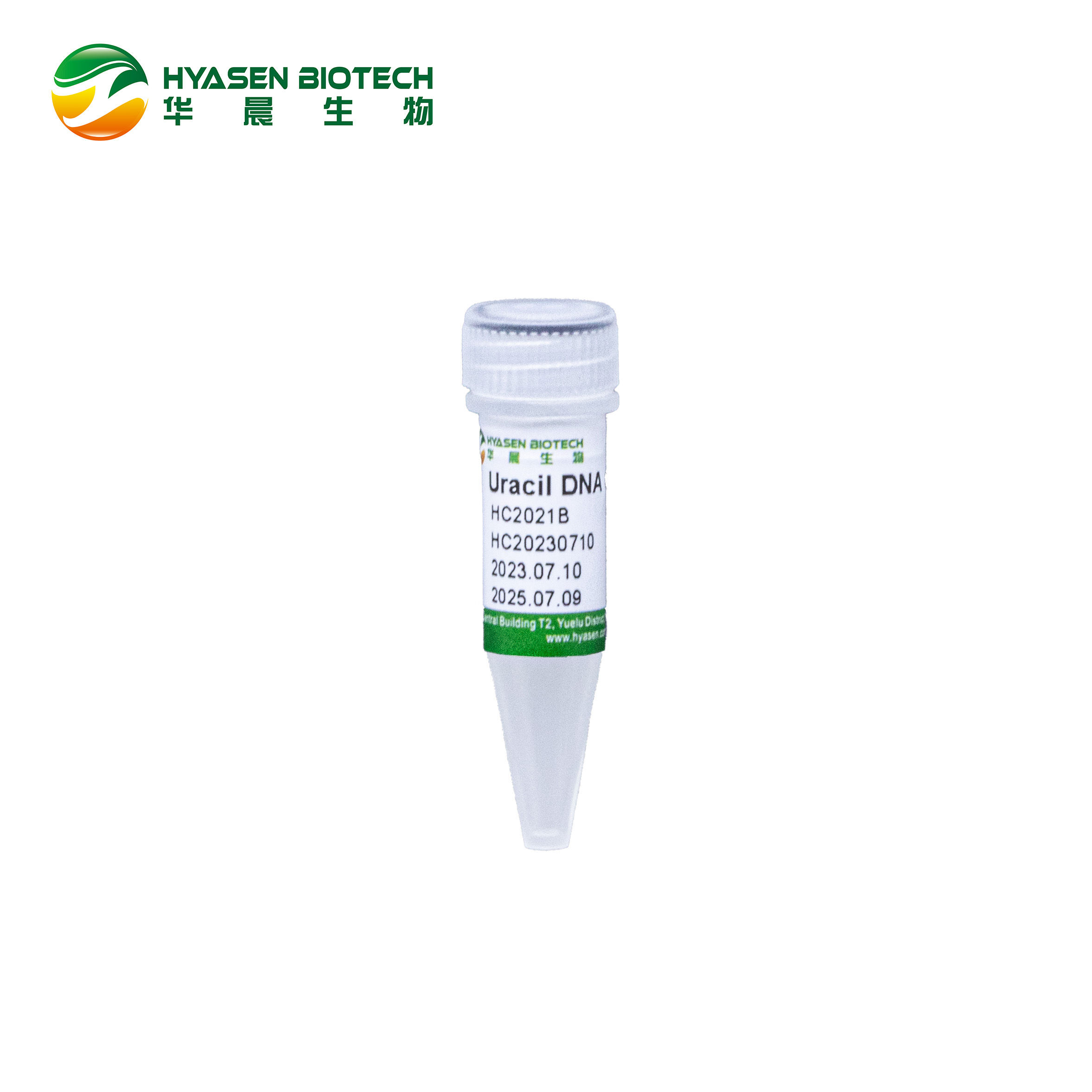
Uracil DNA Glycosylase
Uracil-DNA Glycosylase (UNG or UDG) is a recombinant clone of E.coli with a molecular weight of 25 kDa. It catalyzes the release of free uracil from uracil-containing single-stranded and double-stranded DNA, and is inactive against RNA, and can be used to prevent contamination of PCR amplification products. The principle of action is based on the fact that if dUTP is substituted for dTTP in the PCR reaction and a PCR amplification product containing dU bases is formed, the enzyme can selectively break the glycosidic bond of U bases in single-stranded and double-stranded DNA and degrade the PCR amplification product.
Recommended Application
Contamination Prevention Amplification
Storage Condition
-20°C for long term storage, should be mixed well before use, avoid frequent freeze-thaw.
Storage buffer
20 mM Tris-HCl (pH 8.0) , 150 mM NaCl, 1 mM EDTA, 1 mM DTT, Stabilizer, 50% Glycerol.
Unit Definition
The amount of enzyme required to degrade 1µg of single-stranded DNA containing dU bases in 1 hour at 37°C is 1 unit.
Quality Control
1.SDS-PAGE electrophoretic purity greater than 98%
2.Amplification sensitivity, batch-to-batch control, stability
3.After 1U of UNG is treated at 50℃ for 2mins, the template containing U below 103 copies should be completely degraded and no amplification product can be produced
4.No exogenous nuclease activity
Instructions
|
Components |
Volume (μL) |
Final concentration |
|
10 × PCR Buffer (dNTP free, Mg²+ free) |
5 |
1× |
|
dUTPs (dCTP, dGTP, dATP) |
- |
200 μM |
|
dUTP (replace dTTP) |
- |
200-600 μM |
|
25 mM MgCl2 |
2-8 μL |
1-4 mM |
|
5 U/μL Taq |
0.25 |
1.25 U |
|
5 U/μL UNG |
0.25 (0.1-0.5) |
0.25 U (0.1-0.5) |
|
25 × Primer Mix a |
2 |
1× |
|
Template |
- |
<1μg/reaction |
|
ddH₂O |
To 50 |
- |
Note: a: If used for qPCR/qRT-PCR, the fluorescent probe should be added into the reaction system. Usually, a final primer concentration of 0.2 μM can give good results; when the reaction performance is poor, the primer concentration can be adjusted in the range of 0.2-1 μM. Usually, the probe concentration is optimized in the range of 0.1-0.3 μM. Concentration gradient experiments can be performed to find the best combination of primer and probe.
Notes
1.UNG enzyme can be used to remove the contaminated dUTP amplification products from the reaction system before the PCR amplification reaction, then to avoid false-positive results due to product contamination.
2.The optimal temperature for UNG enzyme to be used in the anti-contamination PCR reaction is generally 50℃ for 2mins; the inactivation condition is 95℃ for 5mins.
3.Avoid frequent freeze-thaw, and do not expose to large temperature fluctuations.
4.Different genes to be amplified have different utilization efficiency of dUTP and sensitivity to UNG enzyme, therefore, if the use of UNG system leads to a decrease in detection sensitivity, the reaction system should be adjusted and optimized, if you need technical support, please contact our company.






-300x300.jpg)
